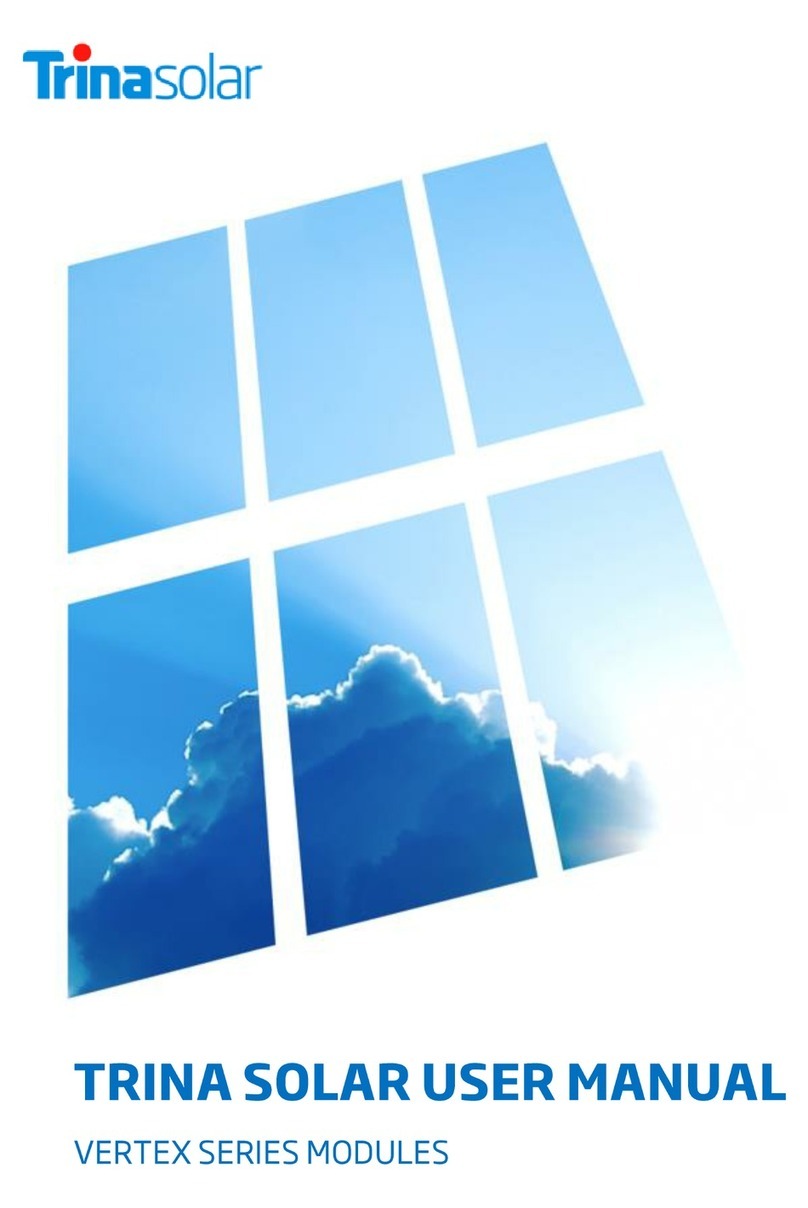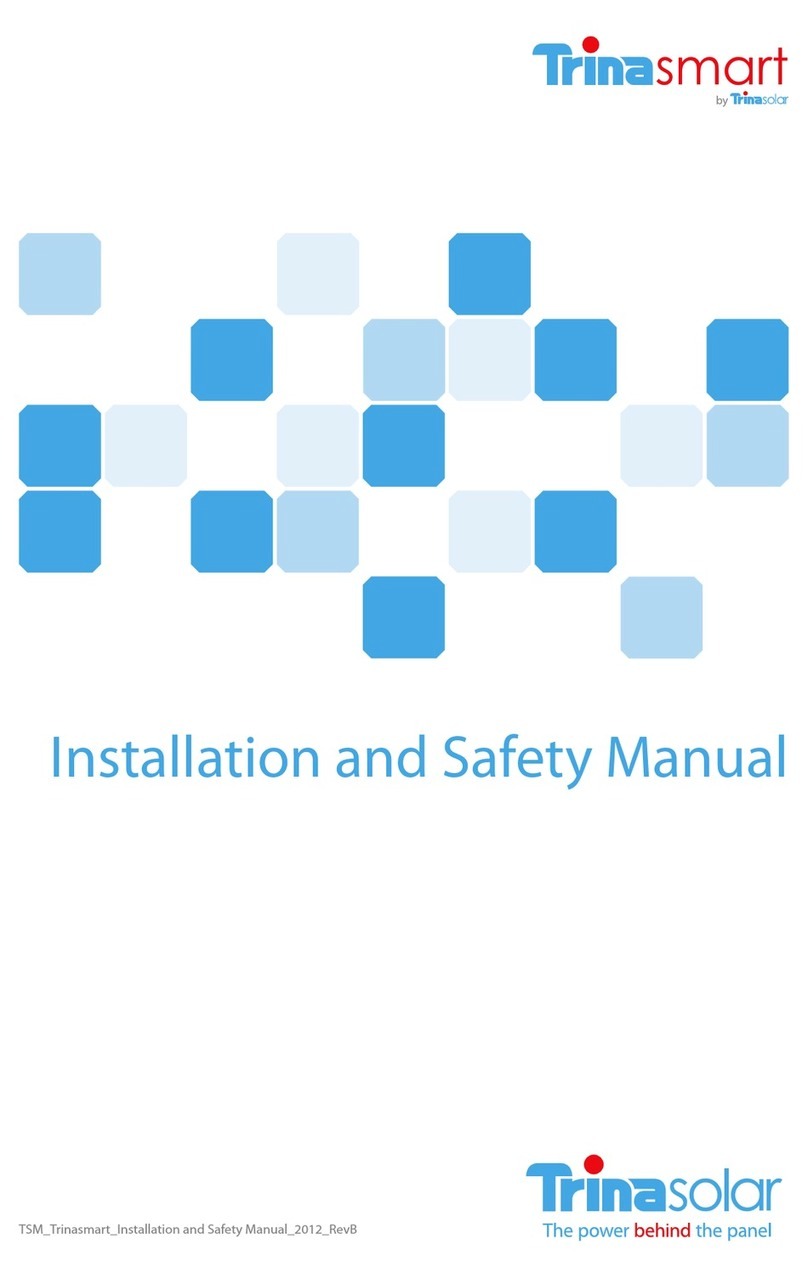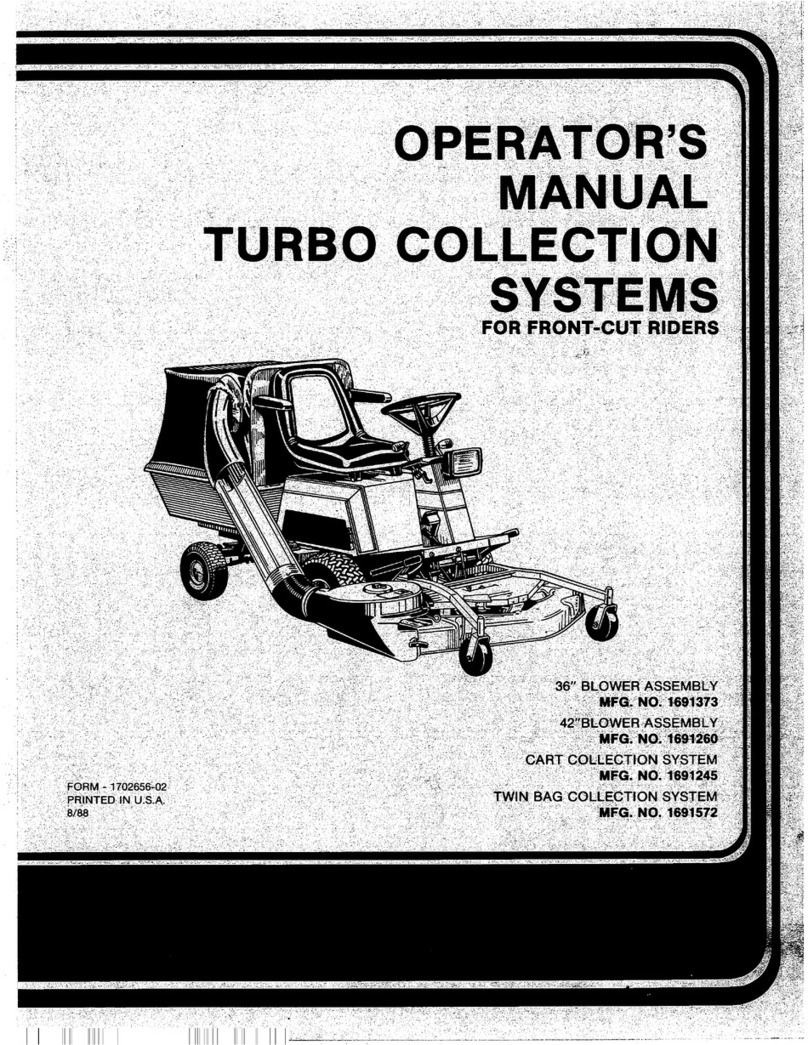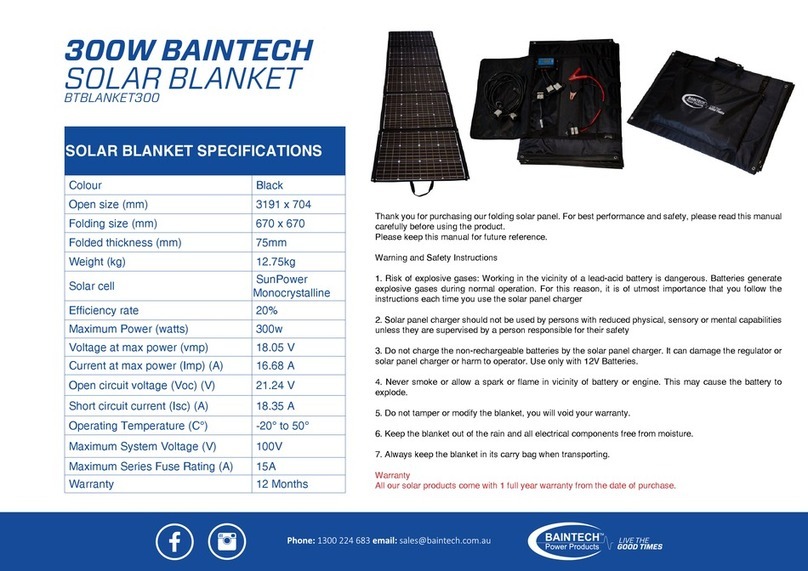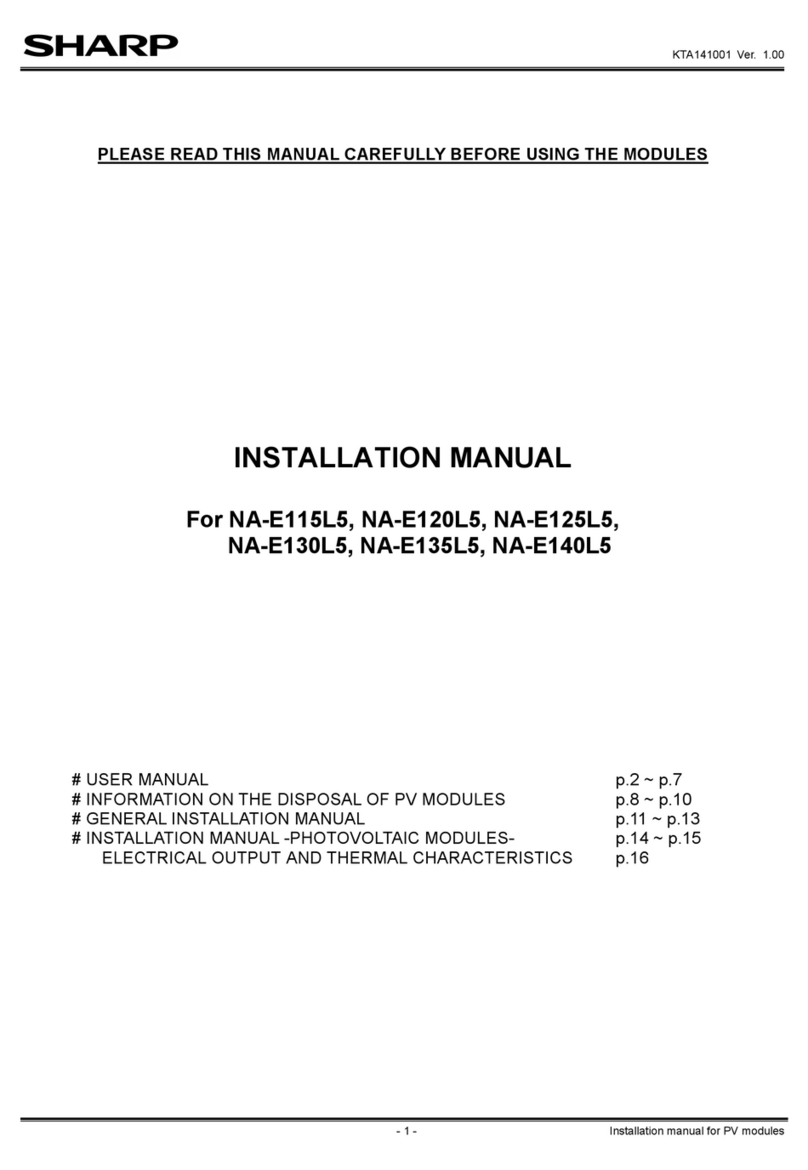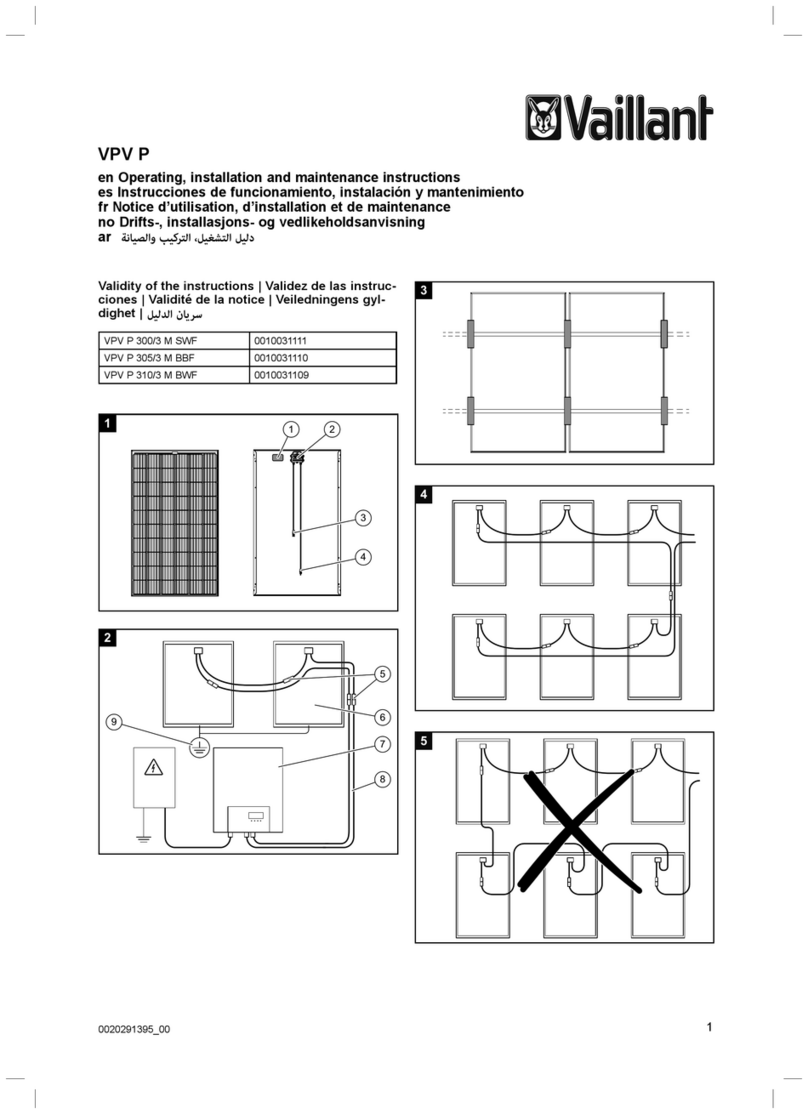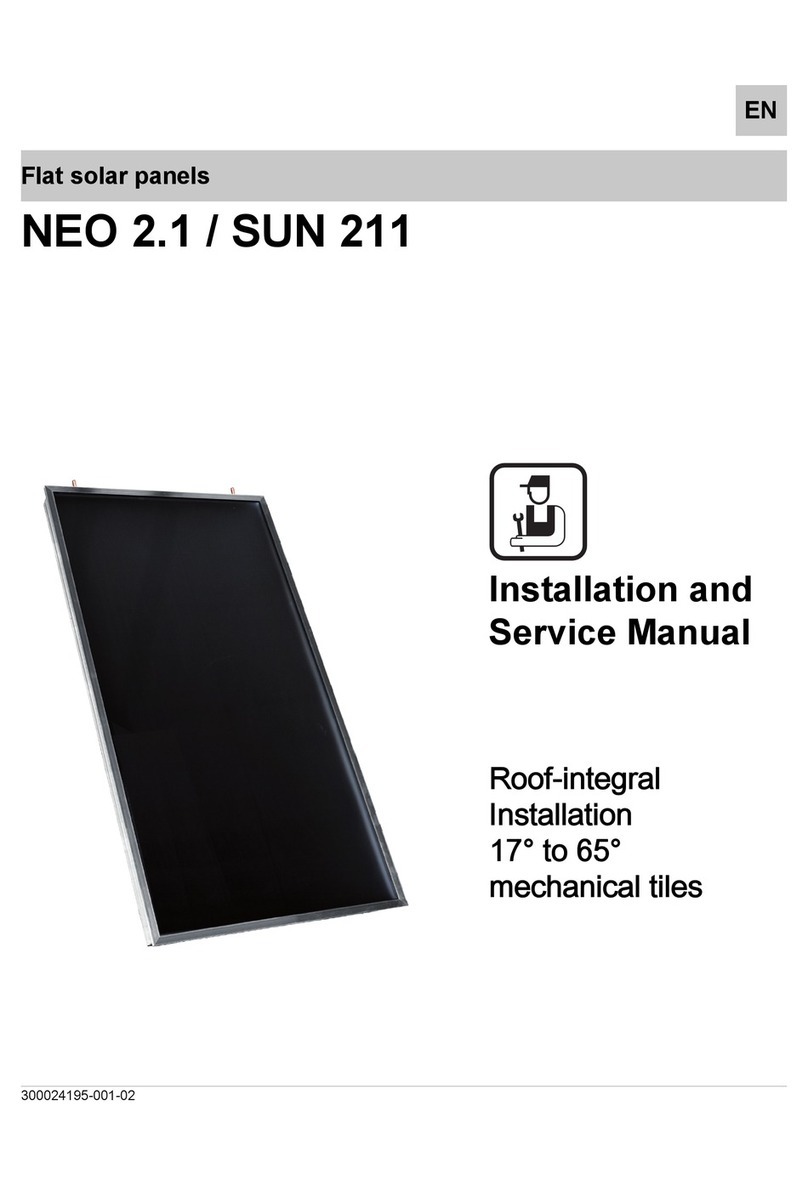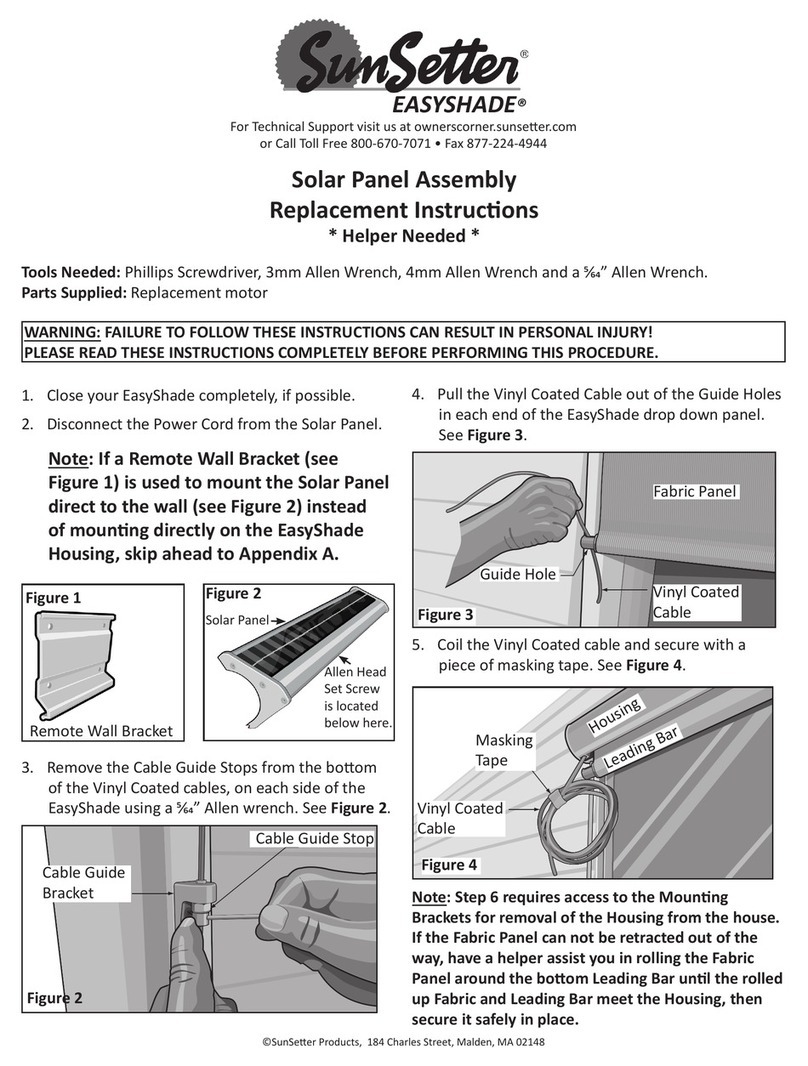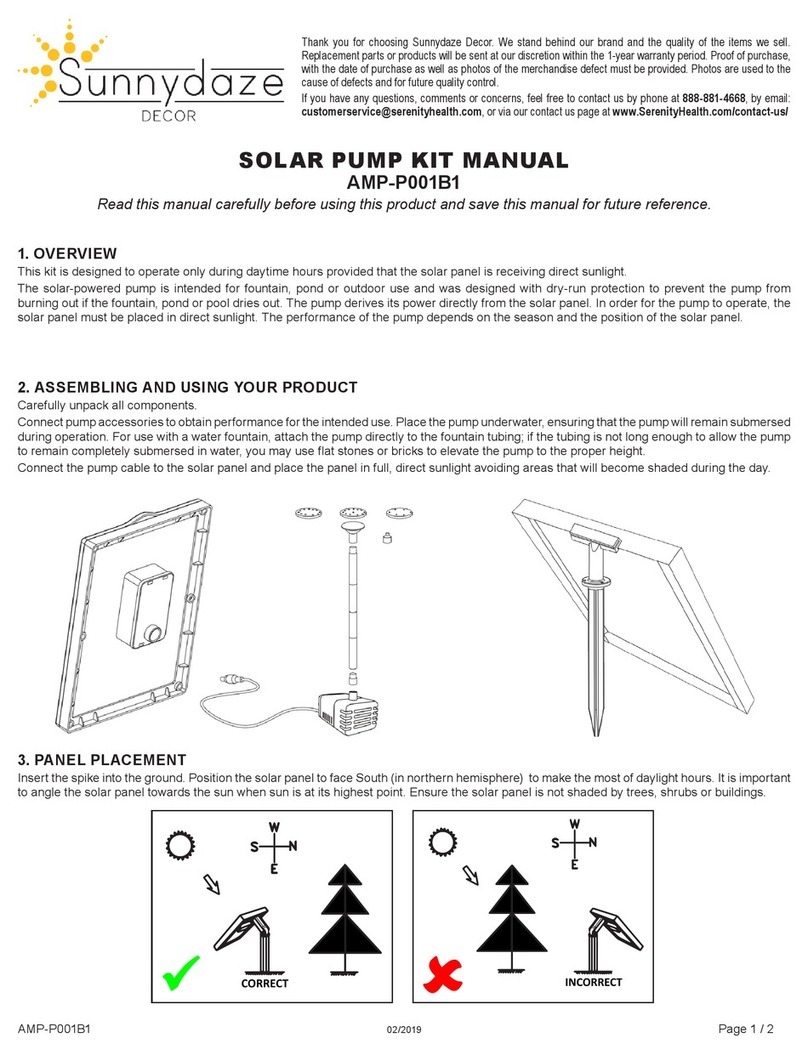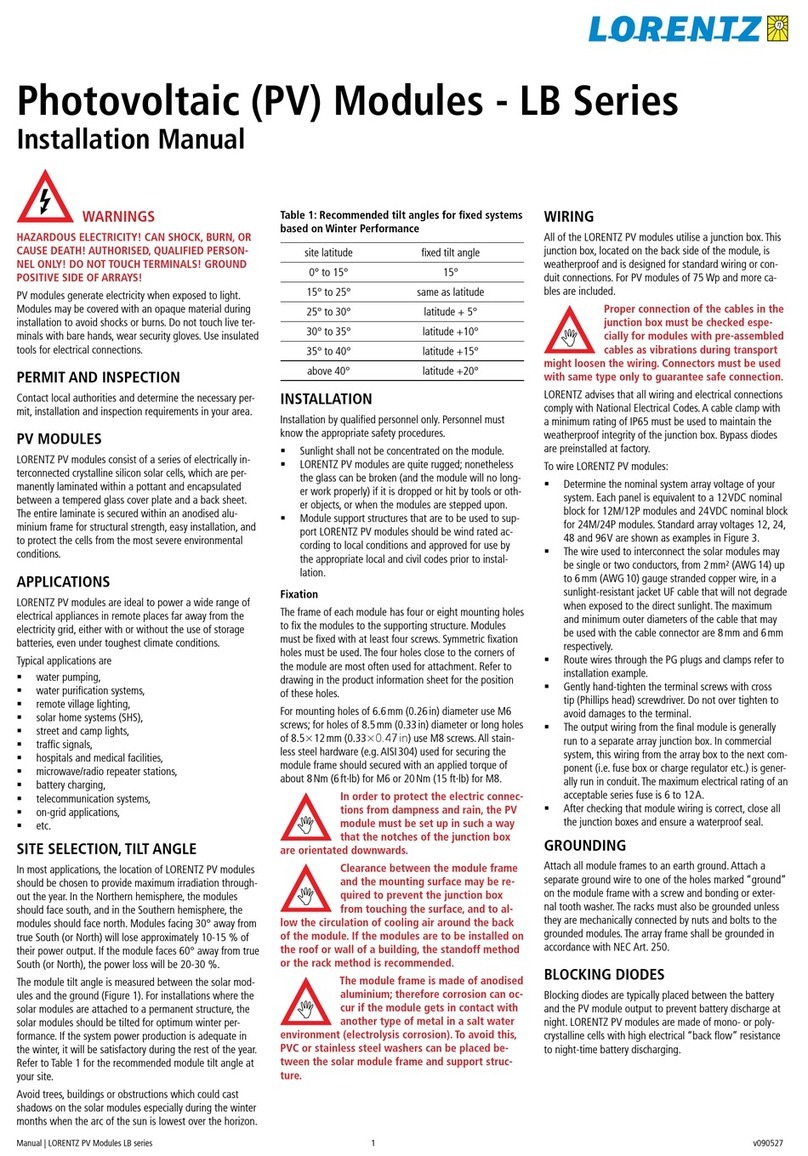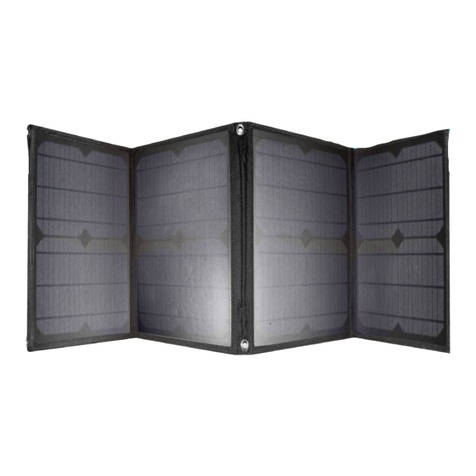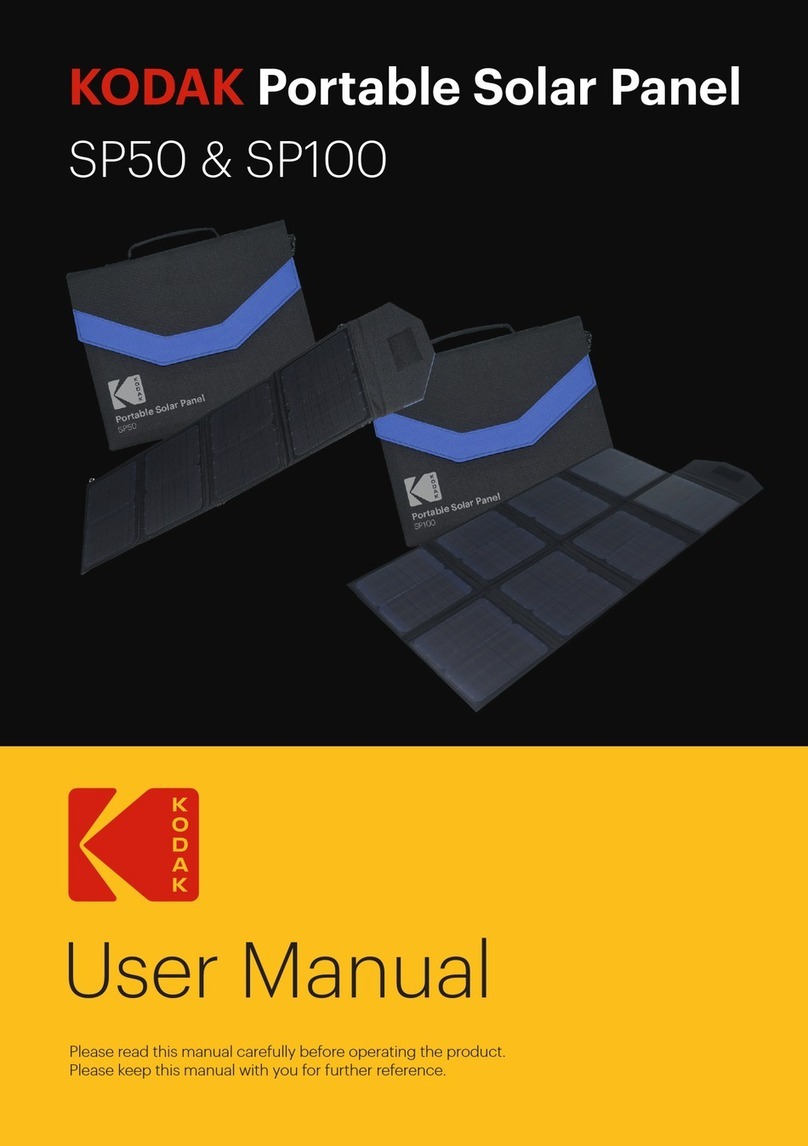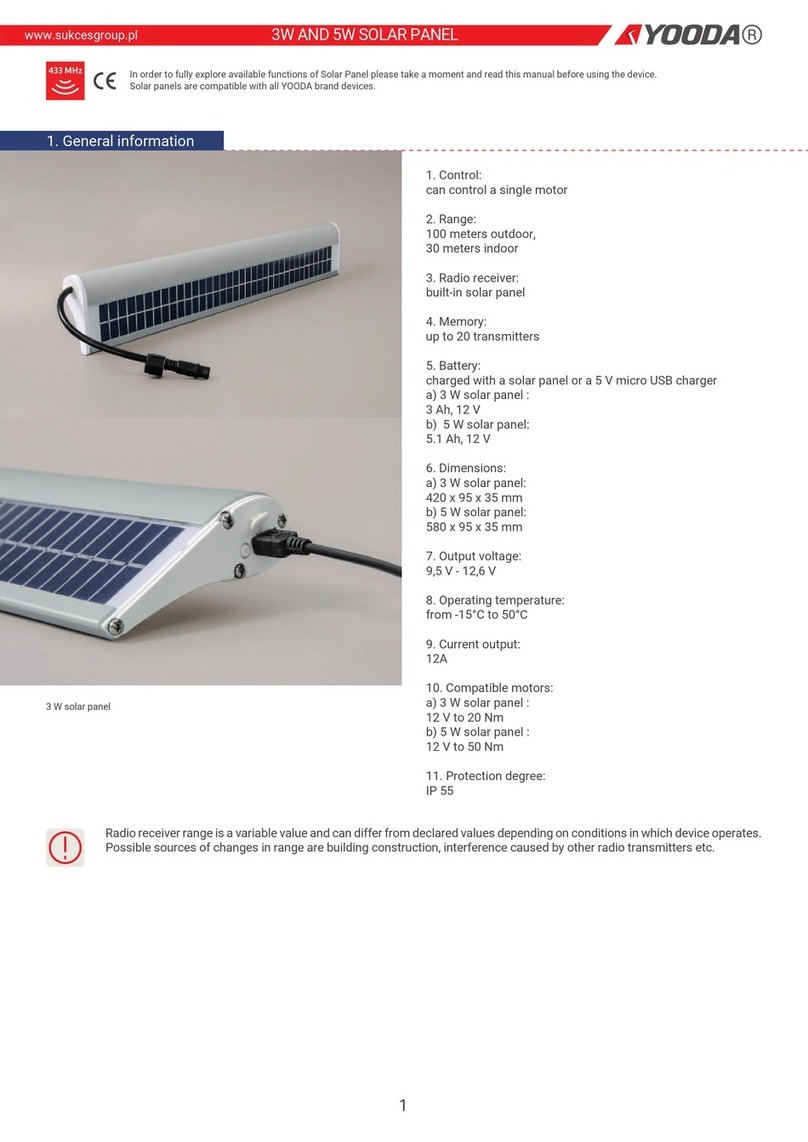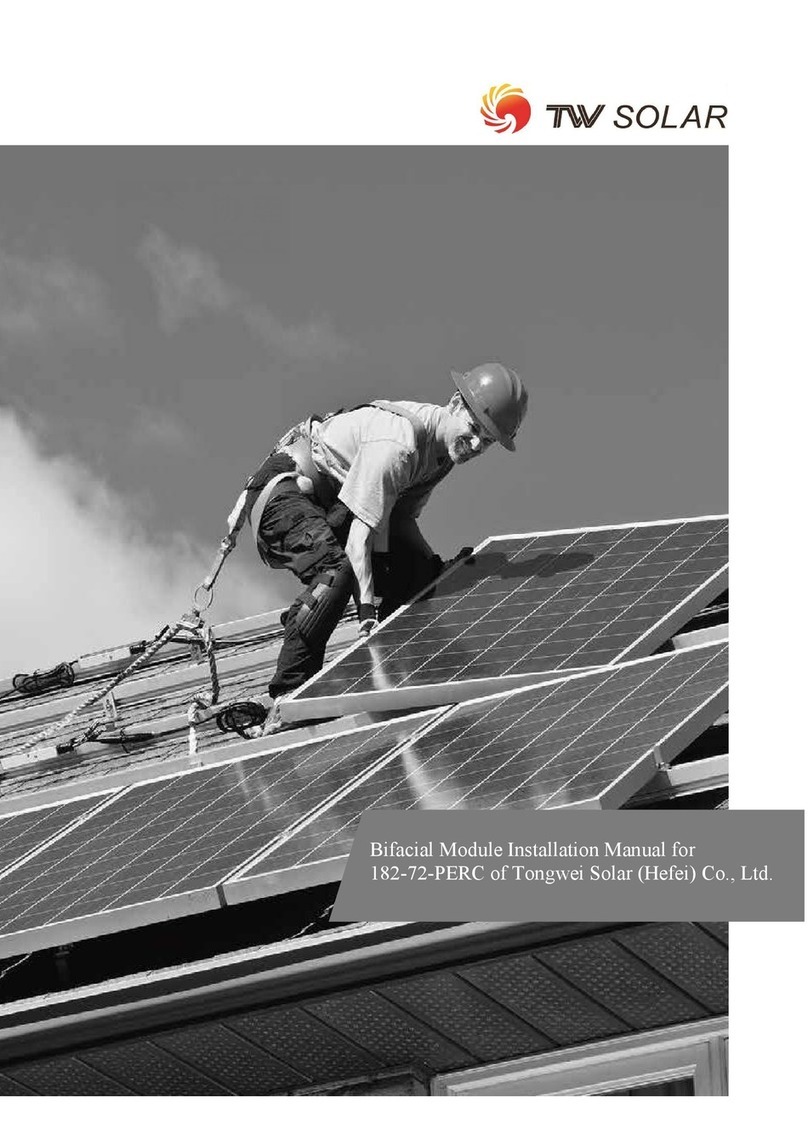
- 3 -
1. DISCLAIMER OF LIABILITY
The installation, handling and use of Trina Solar crystalline modules are beyond company control. Trina Solar does
not assume any responsibility for loss, damage, injury or expense resulting from the improper installation, handling,
use or maintenance.
Trina Solar assumes no responsibility for any infringement of patents or other rights of third parties that may result
from use of the module. No license is granted by implication or under any patent or patent rights.
Specifications included in this manual are subject to change without prior notice.
2. SAFETY PRECAUTIONS
Potentially lethal DC voltages can be generated whenever PV Modules are exposed to a light source, therefore,
avoid contact with electrically active parts and be sure to isolate live circuits before attempting to make or break any
connections.
Only authorized and trained personnel should have access or perform work on the modules or solar system, always
wearing rubber gloves and boots with maximum working voltage not lower than 1000V DC (For TSM-PE05A.**,
PE14A.**, not lower than 1500V DC).
When working on electrical connections, remove all metallic jewelry, use properly insulated tools and wear
appropriate personal protective equipment to reduce the risk of electric shock.
Do NOT stand or step on, damage or scratch the front or backside surfaces of the module.
Broken modules cannot be repaired and contact with any module surface or frame can lead to electrical shock. Do
NOT use a module with broken glass or torn substrate.
Do NOT disassemble the modules or remove any part of the module.
Protect the electrical plug contacts against corrosion and soiling. Make sure that all connectors are corrosion free and
clean before making the connection.
Do NOT install or handle modules when they are wet or during periods of high wind.
Ensure that all connections are securely made with no gap between the contacts. Any gap can result in electrical
arcing that can cause a fire hazard and/or an electric shock.
Make sure that the polarity of each module or a string is not reversed considering the rest of the modules or strings.
Do NOT artificially concentrate sunlight on these solar modules.
The maximum voltage of Trina Solar modules should not exceed 1000V DC (For TSM-PE05A.**, PE14A.**,
below 1500V DC). This maximum voltage should not be exceeded at any time and, as the voltage of the module
increases, above data sheet values, at operating temperatures below 25°C, then these need to be taken into account
when designing a PV system.
Do NOT use water to extinguish fires of an electrical origin.
Maximum system voltage must not exceed 1000V DC when UL 1000V products (TSM-****D*. **) are used.
Maximum system voltage must not exceed 1500V DC when UL 1500V products (TSM-****E*. **) are used.
Do not walk on the modules.
Do not disconnect the modules under load to avoid arcs and electrical shocks. If needed cover the module surface
with an opaque cover.
Most of the time, the solar module is likely to produce more power, or current, than that rated at standard test
conditions. Accordingly, the value of ISC marked on this module should be multiplied by a factor of 1.25 when
determining the conductor current ratings, fuse sizes and size of controls connected to the PV output. Refer to
Section 690.8 of the National Electric Code to check when an additional multiplying factor of 1.25 may be
applicable.
Installation in Canada shall be in accordance with CSA C22.1, Safety Standard for Electrical Installations, and
Canadian Electrical Code Part 1.The System Fire Class Rating of the module or panel in a mounting system in
combination with a roof covering complete with requirements to achieve the specified System Fire Class Rating for
a non-BIPV module or panel.
Any module or panel mounting system has limitations on specific inclination required to maintain a specific System
Fire Class Rating.
Where common grounding hardware (nuts, bolts, star washers, spilt-ring lock washers, flat washers and the like) is
used to attach a listed grounding/bonding device, the attachment must be made in conformance with the grounding
device manufacturer's instructions.
Common hardware items such as nuts, bolts, star washers, lock washers and the like have not been evaluated for
electrical conductivity or for use as grounding devices and should be used only for maintaining mechanical
connections and holding electrical grounding devices in the proper position for electrical conductivity. Such devices,
where supplied with the module and evaluated through the requirements in UL1703, may be used for grounding














